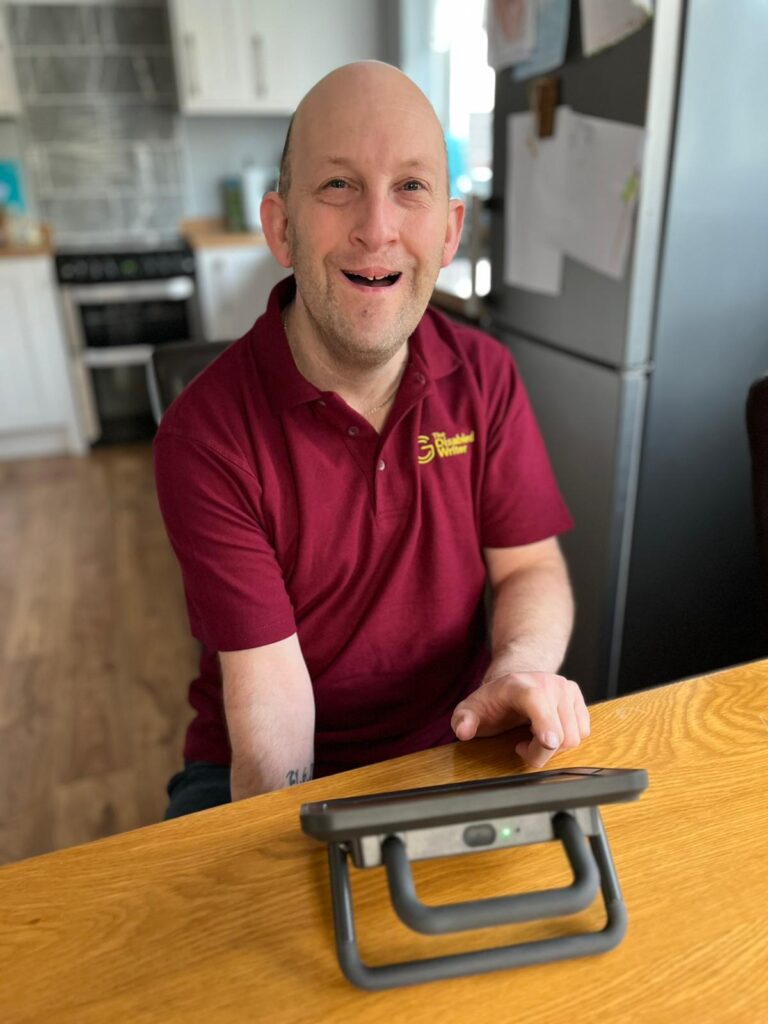From Fighting It to Finding My Voice with AAC
October was AAC Awareness Month. Augmented and Alternative Communication (AAC) refers to any tool or method that supports or replaces spoken language for people who have difficulties with speech. This can range from simple approaches like gestures, signs, and picture boards to more advanced technology like speech-generating devices, eyegaze systems, and text-to-speech software. It allows people to communicate in a way that works for them, on their own terms. I’ve always had mixed feelings about using AAC. It’s never been smooth or simple. At times, I hated it. It was bulky, slow, and frustrating. I spent years trying to avoid it, relying on people around me to speak for me. But deep down, I knew that wasn’t real independence.

This month changed things. Speaking at Cardiff Met – The Power of Lived Experience
I was invited to give a talk at Cardiff Metropolitan University by Katherine Broomfield, a Senior Research Fellow and Speech and Language Therapist, and Ria Bayliss, Programme Director, Bsc (Hons) in Speech and Language Therapy, as part of their Interprofessional Education Training and AAC Group. I spoke about my life with cerebral palsy, my experiences with communication, and how AAC has shaped my journey, the good and the bad. The students were brilliant. Open-minded, respectful, and genuinely interested. Their feedback? It’s been some of the best I’ve had. They didn’t just listen, they embraced it with enthusiasm. They understood what it means to communicate differently, and how much that matters in practice. That sort of response makes a difference.
Smartbox – Giving AAC a Real Purpose
Later in the month, I visited the Smartbox Assistive Technology team in Bristol, one of the leading companies in the AAC field. They’re the people behind Grid 3, the software I use. Grid 3 is a communication tool that supports people who can’t rely on speech. It’s fully customisable and works with different access methods, eyegaze, switches, or touch. It helps people express themselves clearly, whether that’s through pre-set phrases, full conversations, social media, emails, or presentations. During the visit, we looked at how I use Grid 3 now and how to tweak it so it actually works for me, not against me. I was treated like a professional wanting to improve how I communicate. It was so refreshing to visit such a forward-thinking company that gets how it feels to want to be able to communicate more effectively in today’s ever-growing and fast-paced society. That felt powerful. Properly empowering, in fact.
A Shift in Thinking
I’ve come a long way since the early days of bulky Lightwriters and feeling like an afterthought in conversations. These days, my device gives me control. I choose when and how I speak. I can hold the room. That matters, especially when you’ve spent most of your life being spoken over, ignored, or having people make assumptions before they even get to know you. Let’s be clear, AAC doesn’t make life easy. But it makes life possible. It’s not a luxury. It’s not an extra. It’s how I get my voice out, in my way, on my terms.
Where I Stand Now
I’m beginning to develop a genuine appreciation for AAC, as I continue to see how effectively it supports me in expressing myself clearly and independently. If you use AAC, or support someone who does, know this: it’s okay to feel frustrated by it sometimes. It’s okay to want to throw it all out the window. But it’s also okay to come back to it, to find your way with it, and to say, “This is how I speak.”
This AAC Awareness Month reminded me that communicating differently doesn’t lessen my voice; it strengthens it. However, when I speak, it’s still me being heard. That’s what truly matters.
Here are links for Cardiff Metropolitan University Centre for Speech, Hearing and Communication Research and SmartBox Assistive Technology if you wish to explore AAC further:-
